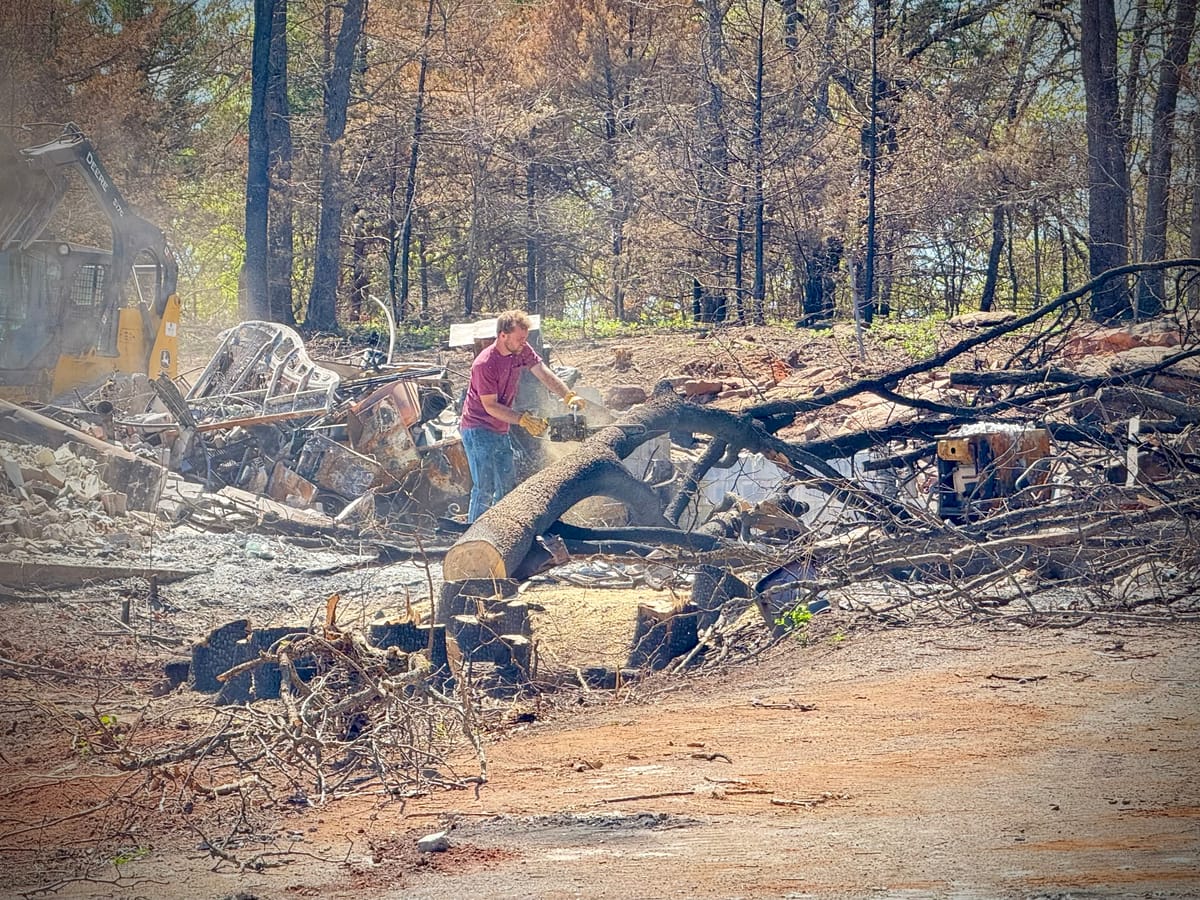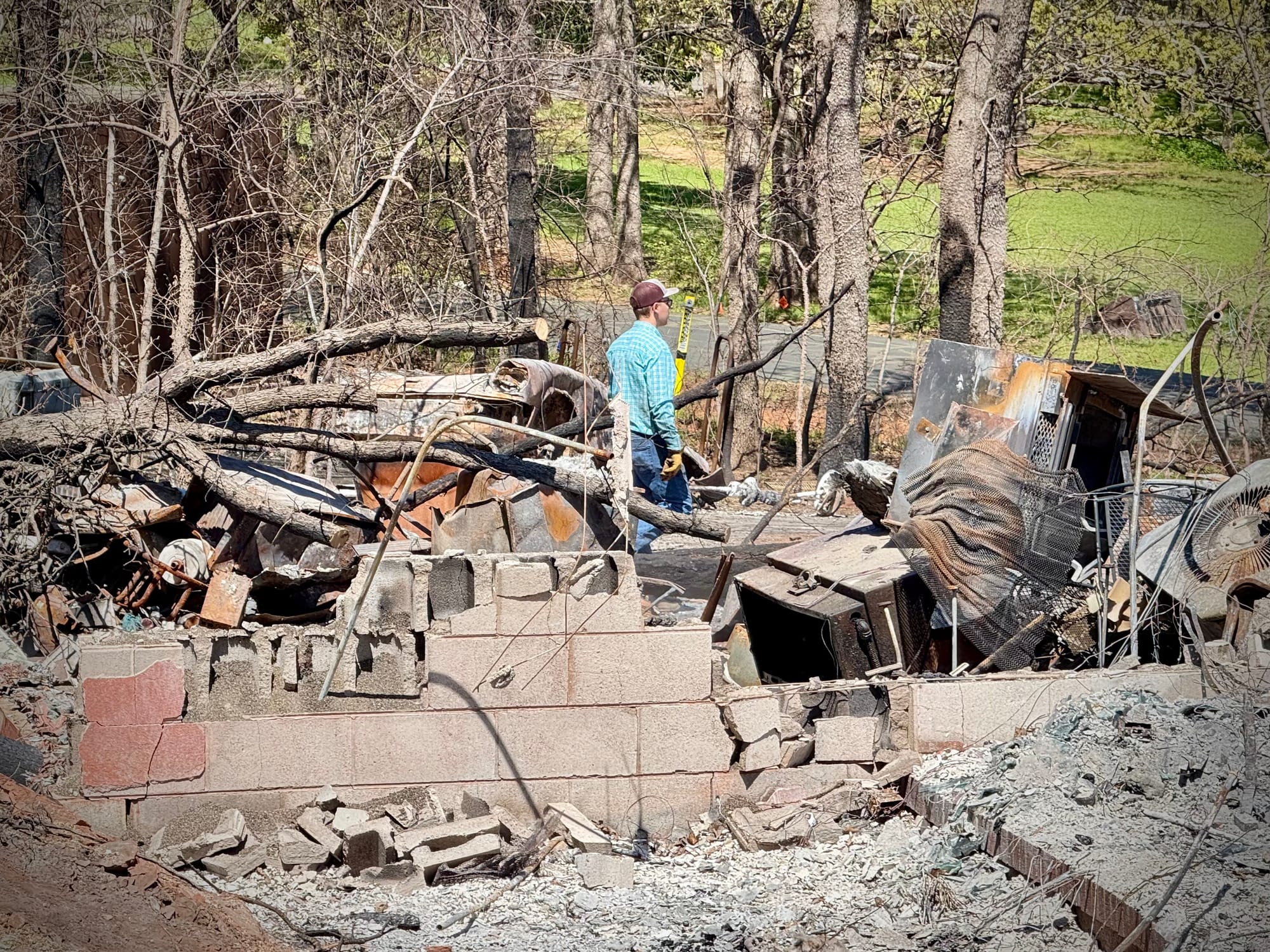

The recent wildfires that swept through Payne County may have a substantial impact on the county's tax base, with County Assessor Jason Gomez warning officials about potential decreases in property valuations during Monday's Budget Board meeting.
"These values of millions of dollars in net assessment is coming off of the tax roll for 2025," Gomez said. "It's pretty significant to budgets and what we do differently."
The financial implications extend beyond immediate property loss, as Gomez explained that even when properties are rebuilt, their taxable values may be capped.
"People that build back there won't be a bunch of $400,000 homes added to the tax roll if they build back to the original square footage," he said.
Gomez provided an example of how this works: "If you've got a house out in Nottingham, it was built in 1978 and they're paying on a capped value of $130,000. They build a $600,000 house, their taxable value is going to be $130,000 back up to the original square footage of that home."
According to the statue a credit is allowed for homeowners whose primary residence was damaged or destroyed in a natural disaster. The credit is the difference between property taxes paid before and after the disaster, based on the same square footage. Eligible taxpayers can claim the credit for five years, with the amount decreasing after the first year.
Read the Oklahoma Statue on primary residences lost to natural disasters
§68-2357.29A. Credit for homeowners who lost primary residence to natural disasters in 2012 and 2013. A. For tax years beginning after December 31, 2011, there shall be allowed a credit against the tax imposed by Section 2355 of this title for owners of residential real property whose primary residence was damaged or destroyed in a natural disaster occurring after December 31, 2011, for which a Presidential Major Disaster Declaration was issued or with respect to calendar year 2012 or calendar year 2013 for which a Presidential Major Disaster Declaration was not issued. The amount of the credit shall be the difference between the ad valorem property tax paid on such property and improvements in the year prior to the damage or destruction and the amount of ad valorem property tax paid on the property and improvements the first year after the improvement is complete. For purposes of this credit, the amount of ad valorem property tax paid the first year after the improvement is complete shall be based on the same or similar square footage as the property which was damaged or destroyed. For purposes of this section, a "natural disaster" shall mean a weather or fire event for which a Presidential Major Disaster Declaration was issued; provided, however, that with respect to damage or destruction caused by a tornado occurring in calendar year 2012 or in calendar year 2013 for which a Presidential Major Disaster Declaration was not issued, "natural disaster" shall include such a tornadic occurrence.
B. The credit shall be a refundable credit. Eligible taxpayers shall be entitled to claim this credit for five (5) consecutive years. After the first year the credit is claimed, the amount of the credit shall be eighty percent (80%) of the previous year's credit. If the taxpayer has no income tax liability, or if the credit exceeds the amount of the income tax liability of the taxpayer, then the credit, or balance thereof, shall be paid out in the same manner and out of the same fund as refunds of income taxes are paid and so much of the fund as is necessary for such purposes is hereby appropriated.
C. In order to qualify for this credit:
1. The property shall have been damaged or destroyed by a natural disaster after December 31, 2011;
2. The property shall be within an area which has been declared a federal disaster area; Oklahoma Statutes - Title 68. Revenue and Taxation Page 720
3. The property shall be the primary residence of the owner both prior to and after the natural disaster;
4. The owner shall have been granted a homestead exemption or be eligible to claim a homestead exemption both prior to and after the natural disaster;
5. The primary residence shall be repaired or rebuilt on the same property as it existed prior to the natural disaster; and
6. The primary residence shall be repaired or rebuilt and used as the primary residence no later than December 31, 2015, with respect to the calendar year 2012 or 2013 natural disaster and no later than thirty-six (36) months after the date of any natural disaster occurring on or after January 1, 2014.
D. The credit shall not be allowed if the property is transferred or title is changed or conveyed as defined in Section 2802.1 of this title. Any credit claimed and allowed prior to the transfer of the property or the change or conveyance of title shall not be affected.
E. The Oklahoma Tax Commission shall promulgate any necessary rules and develop any necessary forms to implement the provisions of this section.
"This was beyond their control," Gomez explained. "Statutes going to allow them to pay on what was, what their effective value was versus the 2025 or 2026 year built cost of new construction."
The assessor's office has already visited all affected parcels in the county but doesn't yet have final numbers on the total impact.
"I think it's something that by hopefully next budget board meeting have a little bit clearer numbers because it's something that we probably need to look into taxes collected even on where we have been and where we're going to be in 2025," Gomez said.

County Clerk urges FEMA training for officers and first deputies
County Clerk Glenna Craig advised department heads to be conservative with their budget estimates for the coming year in light of this information. Estimates and needs are due by April 21.
The board also discussed improving disaster preparedness through Federal Emergency Management Agency (FEMA) training.
Craig emphasized the importance of updating training for all county officials, noting that many elected officials and first deputies haven't completed the required courses.
"I think we need to update all of this in our training. I think we all need to be well versed in what we do, right, and training," Craig said.
The training will focus on the Incident Command System (ICS), which outlines procedures during disasters. Officials are working out a date in June for the four-hour training session, which will begin at 8:30 a.m. in the boardroom.
The original home of Red Dirt Music is ready to boot scoot and boogie this April. Stillwater is filled with outdoor activities, live music festivals, art, and so much more this month!
County road equipment not built for fighting wildfires
The wildfire response also prompted discussion about equipment use during emergencies. Commissioner Rhonda Markum raised concerns about rural residents who couldn't get help as fires approached their homes.
"People were calling me too that fires are approaching the house," Markum said. "It was a very scary time, especially the problem is in rural Payne County that they don't actually have a fire department."
Pierce Taylor, Director of Payne County Emergency Management explained that county road equipment isn't specifically designed for firefighting, unlike forestry equipment.
"The dozers that the districts have are built different. They're built to grade roads," Taylor said. "When it comes to the fire dozers, a lot of the pumps are reinforced and if there's rubber, it's protected by heat shields."
He added that forestry personnel receive specialized training: "The men who drive the forestry dozers, they're also trained in fire behavior, they're trained what to do in certain situations."
Sheriff Joe Harper supported this assessment, expressing concern about putting county employees at risk.
"With the upgraded equipment that the Wildland crews use and the training that they've had, I don't want to put our county employees in that kind of danger," Harper said.
The sheriff noted the extreme nature of the recent fires, which "completely jumped highway 51 and never touched the median," making conventional firefighting difficult.
"We just ran out of fire apparatus for response," Harper said. "We couldn't get mutual aid from anybody because everybody else was burning up too."
Gomez and Craig participated in recovery efforts at a multi-agency center, helping over 40 people with deeds, property card information, and fraud alerts to assist with insurance claims.
"We laughed and we cried with lots of people," Craig said.
The assessor emphasized his office's role in recovery: "I feel like that's where my responsibility was, not going in there the day after, but giving people a week to kind of sort their lives out and then let the assessor show up and start taking pictures."
The Budget Board will continue to monitor the financial impact of the wildfires as more data becomes available, with Gomez expected to provide updated figures at the next meeting.


